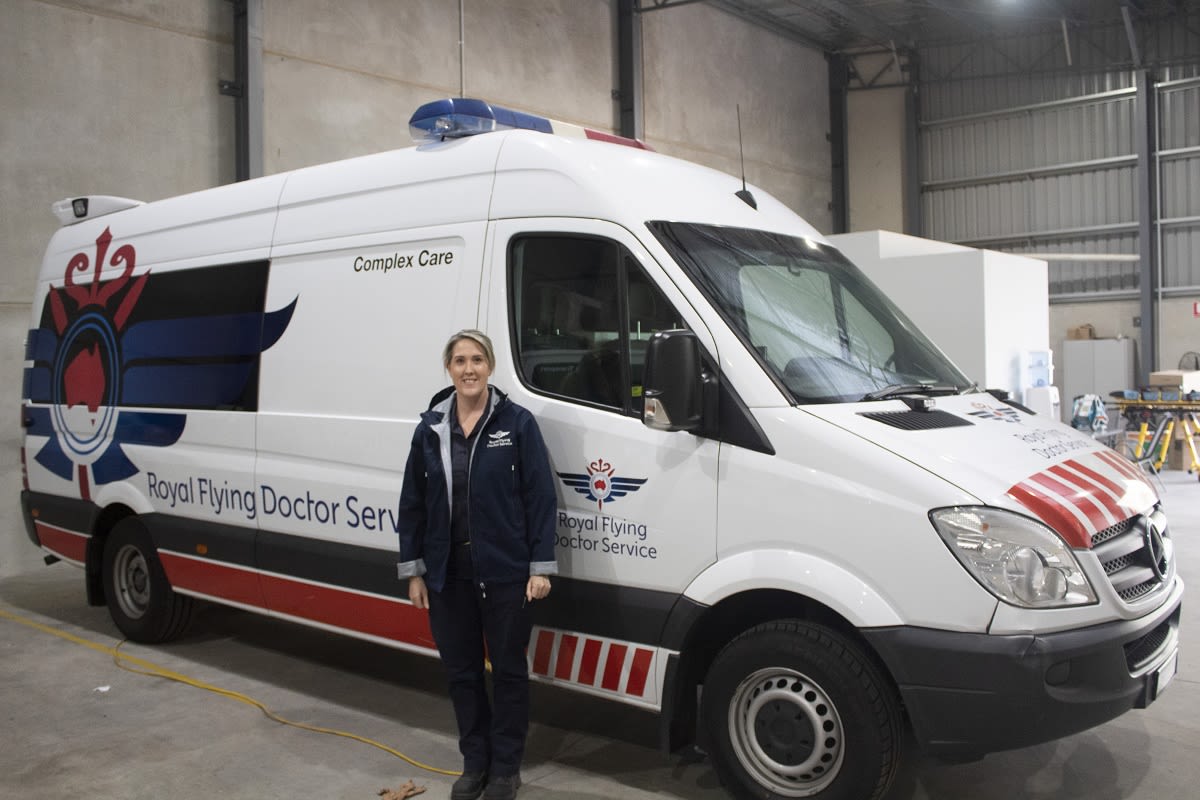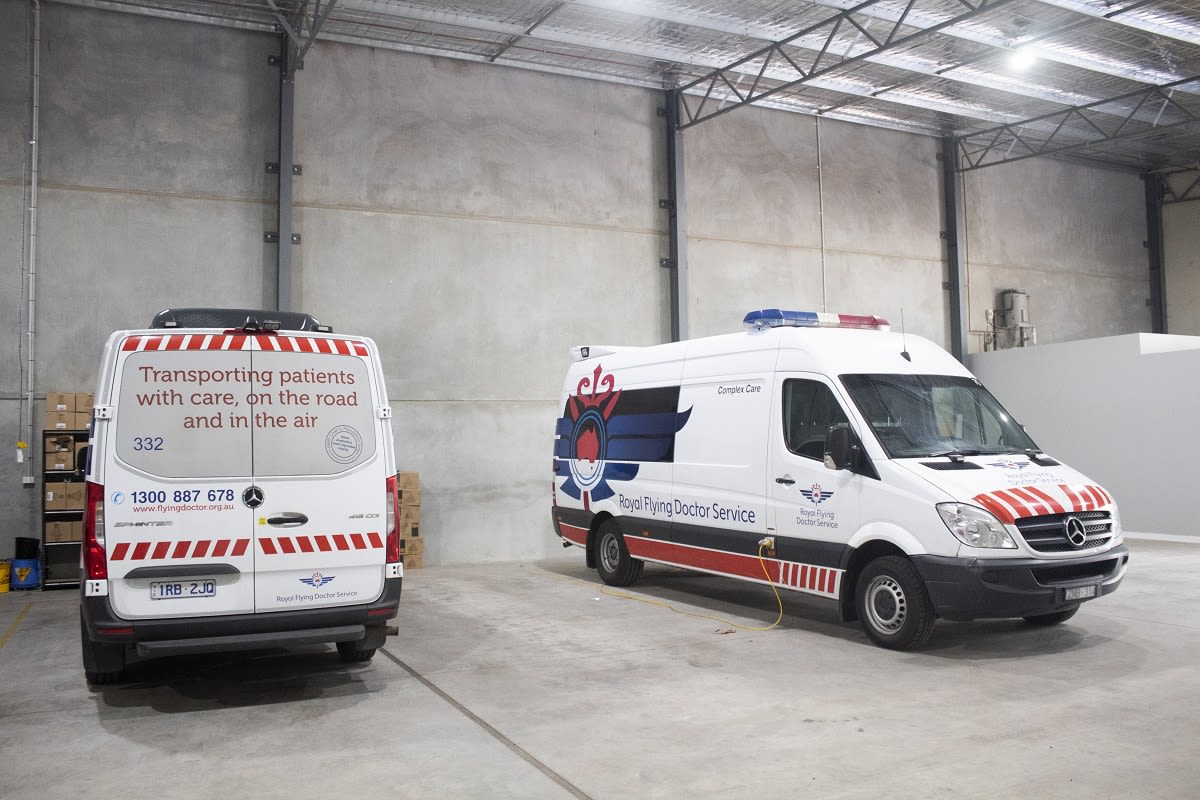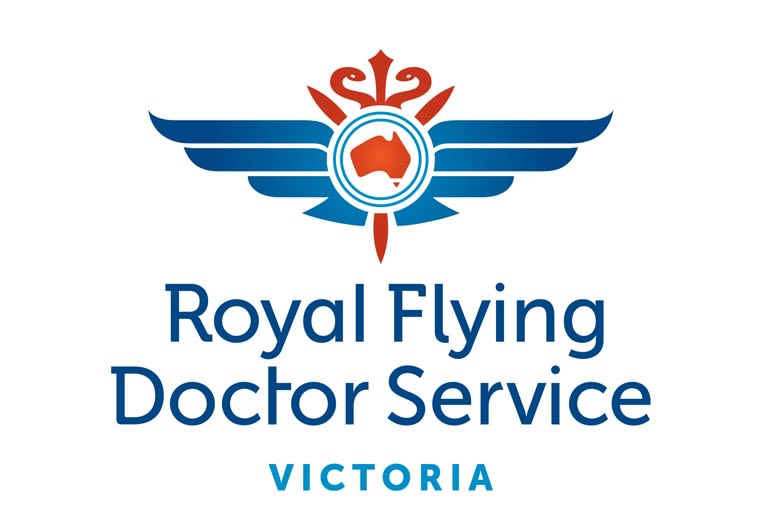Work that’s more than a job
For Flying Doctor patient transport officers like Melissa, non-emergency patient care is just as much about being a trusted confidante as it is providing first rate medical support.

When a lot of people think of the Flying Doctor, they think of emergency rescues.
Some picture our iconic red-bellied planes coming into land on remote landing strips caked in red dirt, with a doctor quickly disembarking to help save the life of someone who has been seriously injured in the Outback.
Emergency rescues like this are in the Flying Doctor's DNA – they're why our organisation was founded more than 90 years ago. However, they represent only a very small part of what we do across the country, and here in Victoria.
Did you know that in the 2020/21 financial year, the Royal Flying Doctor Service conducted 40,298 emergency and non-emergency aeromedical retrievals across the entire country, yet in Victoria alone, we transported 67,854 people by road?
Here in Victoria, the Flying Doctor is heavily involved in the non-emergency patient transport (NEPT) sector. This arm of our organisation might not be as adrenaline-fuelled as the aeromedical adventures we’re famous for, but life as a NEPT provider is filled with its own stories of care, compassion and survival.
I
Why non-critical care is critical for Victoria’s health system

Non-emergency patient transport is mobile care for people who require clinical monitoring or supervision during transport, but do not require a time critical ambulance response.
For example, the Flying Doctor’s NEPT service, called Mobile Patient Care (MPC), includes non-emergency hospital admissions, inter-hospital transfers and hospital discharges to home. Additionally, our service involves the transport of patients to specialist medical and doctor’s appointments, as well as nursing home transfers. As a rule, patients who use a NEPT service like ours will require the use of specialised medical equipment that is contained within our transport vehicle, as well as the clinical skills of our staff onboard the vehicle.
According to a report published by the Victorian Department of Health and Human Services, Victoria’s private and licenced NEPT operators collectively undertook a whopping 405,000 non-emergency patient transports in 2018/19 - this includes both transports that operators conducted independently, and as contracted transports for Ambulance Victoria
While no NEPT transport is considered time critical – and hence why lights and sirens are rarely used – transports are still organised according to the acuity of the patient: low, medium or high.
The NEPT sector is growing right around the world, and here in Australia, where our country is vast and our population spread-out, the need for a robust NEPT sector is significant. In Victoria alone, many people live a long way from specialist health care services, and lack the ability to transport themselves to their doctor’s appointments – this could be because there is no public transport available to them, they don’t have a driver's licence or a vehicle, they do not have any friends or family nearby to provide lifts or they have a physical or cognitive impairment that prevents them from transporting themselves. In all of these instances, they rely on services like MPC, as without them, these critical medical appointments are missed, which can result in severe adverse effects on their health.
Being able to ensure all Victorians can access quality health care in this way is of the utmost importance to RFDS Victoria, and as Patient Transport Officer (PTO) Mel Merlo explains, it is also incredibly rewarding.
II
Why compassion is everything

While a large portion of NEPT transports are one-offs – for example, when a patient is picked up from hospital and transferred home – many of our patients actually use our MPC service to access regular appointments, such as recurrent dialysis treatments. In these cases specifically, PTOs like Mel are able to foster important personal connections with their patients.
“We build great relationships with our regulars,” says Mel, who recalls a particular patient who likes to track which members of the Bendigo MPC team will pick her up for each treatment. “She's got a whiteboard in her room in the nursing home, where we’ve all signed our names and drawn a picture of an ambulance and little cartoons representing each of us. And [when we arrive to pick her up], she’ll point to the board and say, ‘Oh, you’re that one!’ It’s really lovely.”
The power of this service is that it also allows some people who require regular appointments, such as dialysis treatments, to continue living in their own home, which can be incredibly powerful for a patient’s mental health. If this service wasn’t available, many of these people would likely be required to move into assisted living, as there would be no other way for them to access their critical appointments.
While every single transport is unique and presents its own challenges, Mel stresses that they all have one thing in common: a need for compassion and clear communication.

Flying Doctor Patient Transport Officer, Mel Merlo.
Flying Doctor Patient Transport Officer, Mel Merlo.
“People skills and empathy play a very vital role [in this job], not only for the patient, but for the family as well,” says Mel. “Especially if the patient is elderly and you're taking their life partner away in an ambulance and they have that fear that they're never going to come home again. That's a big fear for both of them.”
Mel recalls are particularly distressing job she was called to recently where the patient, an elderly woman, sadly died. While emergency teams are required to move between jobs quickly, there is more room for non-emergency crews to prioritise compassion.
“[After the patient died], we decided to stay with her husband until his family arrived. We were able to negotiate with ESTA to spend more time with the family, which was possible because we weren’t an emergency service. It was really nice for us to be able to stay with him and console him and just be there for him. That was really, really nice.”
Mel also notes that being able to connect with a patient on a personal level has proven to be especially important during the COVID-19 pandemic, when so many people are feeling more isolated than ever. “There are so many lonely people out there,” says Mel. For her, and for all PTOs and ATAs (Ambulance Transport Attendants) with the Flying Doctor, being able to show a patient genuine compassion is one of the most important parts of her job, and of the non-emergency patient transport sector more broadly.
It’s very easy to notice the stories of emergency rescues – someone is injured, and then somebody comes along to take them to safety. It’s high adrenaline. However, if you take the time to notice all the quieter yet still life-changing moments of non-emergency transportation, you will find a sort of life-saving power that is truly immeasurable.

To find out more about Mobile Patient Care in Victoria, head to our website.

